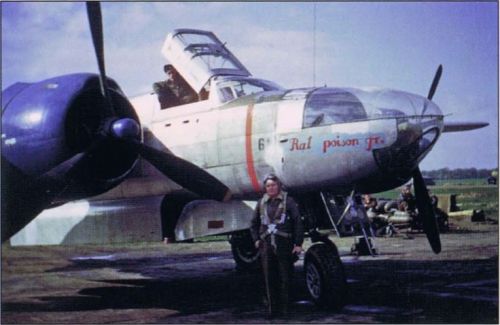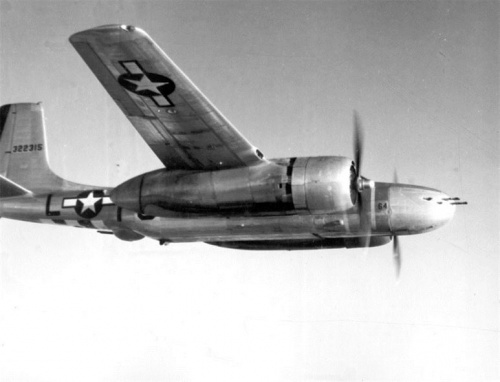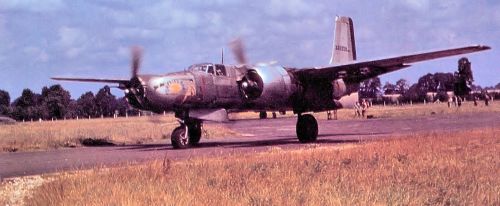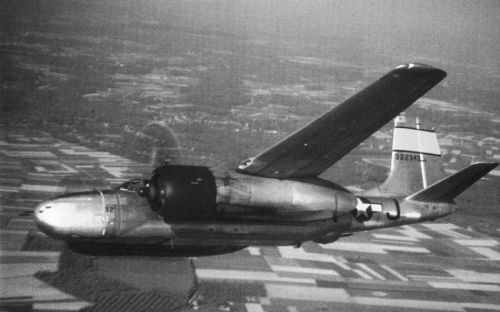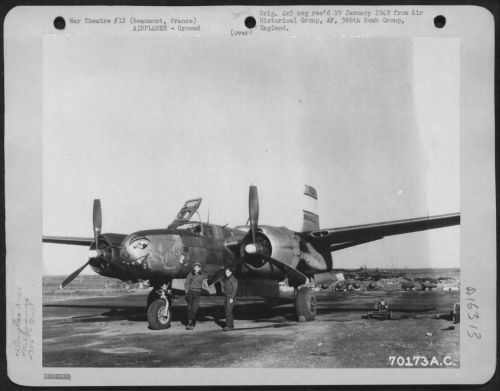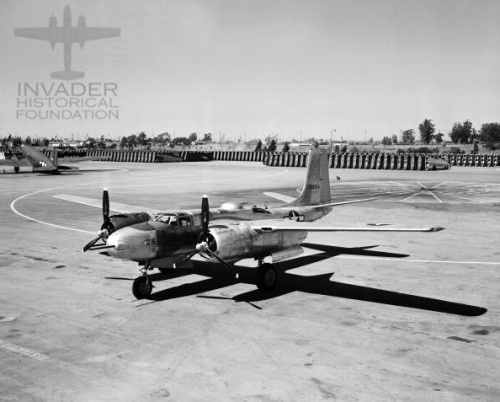Nose Numbers
I was initially very confused about these numbers, but I do understand them now. I'll explain below. My intent was to figure out the purpose of these numbers in order to help identify aircraft in photos. Before I dive into the nose numbers, allow me a moment to deliver a primer on the different types of aircraft numbers.
One number is the Construction Number (CN, C/N). This number represents the number of aircraft that was constructed by the company. The Construction Number spans all makes, models, and production facilities. It's a universal company number to keep track of what they've made and works as a type of inventory control number. For Invaders, this number begins with 6,813.
Another number is the Serial Number. This is a number assigned by the Air Force. The First production model Invader had a serial number of 41-39100. The first two digits represent the Fiscal Year the plane was ordered. In this case, 1941. This is an important distinction because this plane wasn't built until 1943. The rest of the serial number represents that plane in the Air Force inventory across all manufacturers and types of planes. For example, the plane right before the first production Invader was 41-39099, an experimental plane manufactured by Erco called the XPQ-13.
The third number is the Tail Number. The tail number is an abbreviated form of the Serial Number. For example, the first production model Invader with serial number 41-39100 would have a tail number of 139100. The first digit is omitted from the number and it is displayed without the dash. A small point of note; after the plane has been operational for more than 10 years the tail code changes, otherwise it would hypothetically be possible to mix it up with a newer plane (like 51-39100 (there really isn't one, this is just an example)). I've seen this done two ways. 0-139100 is the most common way. A zero precedes the tail number with a dash. On a couple of planes I have seen it done differently: 0-1100. In this case the first digit is the last digit of the Fiscal Year, and then the last 3 digits of the serial number. But I have only seen this rarely and in cases where there was no possibility for confusion. For example, it would be a bad idea to use this approach with 44-34257 because it might be confused with 44-35257.
The last number that's common only appears on planes after WWII. It's called a "buzz code" and is written on the Fuselage. 41-39100 would have a Buzz Code of AC-100 between 1946 and 1947, and then BC-100 after that (when the Invader became known as the B-26). Although there are repeats of the buzz codes, the logic is that two planes with the same buzz code won't be in the same place at the same time. It's a short-hand code used for easy reference.
Now that we've got this all out of the way, that brings us to the Nose Numbers, or Douglas Fuselage Number (DFN) as they are properly called. Some people refer to them as "Line Numbers". Let's take a look at this plane:
Note that there is a number "37" on the nose of this plane. That does not correspond with the Construction Number (6849), or the Serial Number (41-39136). This number is essentially a "build number". As it happens, 41-39136 was the 37th plane to roll out of the Douglas Long Beach manufacturing plant. All of the Invaders built at a specific plant get assigned a fuselage number in accordance with the order that plane was constructed. The Invaders built at Tulsa get one series of numbers, and the Invaders built at Long Beach get another set. There are potential duplicates, but it would only be limited to one of two planes, one for Long Beach, and one for Tulsa.
Note that this plane has the number 61 on the nose. It was the 61st plane built at the Douglas Tulsa plant (43-22312).
It's followed in short order by 43-22315, which is sequentially 3 numbers larger in serial number. Lo and behold, this nose number is also 3 digits larger (64) and its the 64th plane built at Tulsa.
Another example, a semi-famous plane from the 416th Bomb Group called "For Pete's Sake". It bears 79 on the nose and is the 79th plane built at Tulsa.
And one more, example. Note that this plane has 92 on the nose and it was the 92nd plane built at Tulsa.
Note that the preceding planes are not in the same squadron. They are not even assigned to the same Group. 22312 is part of the 386th Bomb Group, while 22315 is part of the 419th. And although 22315 and 22330 are in the same group, they are in different squadrons. It is worth nothing that these Fuselage Numbers are best used in early pictures of Invaders. As they continued their service the numbers on the nose eventually evolved into either parts of the serial number or something like Modex numbers in the Navy.
Here's where it got confusing. This plane, "Stinky", bears the number 126. Initially I had made the assumption that the planes were built in order by the USAF Serial Number. However, I have since learned that this is not the case at all, especially at the Tulsa plant. They would even mix up the types of planes they built, they'd build one B-26C, then 2 B-26Bs, and so on. This plane, serial number 43-22369 was the 126th plane to roll off the line at Tulsa.
Location of Nose Numbers
Since initially creating this page, the 416th Bomb Group Historical Association has clued me in to another detail: Douglas Long Beach and Douglas Tulsa displayed their nose numbers in different locations on the A-26. The Douglas Long Beach plant painted the numbers forward of Station 0, on the nose itself, while Douglas Tulsa painted the numbers aft of Station 0 on the fuselage. Let's look at some known examples.

